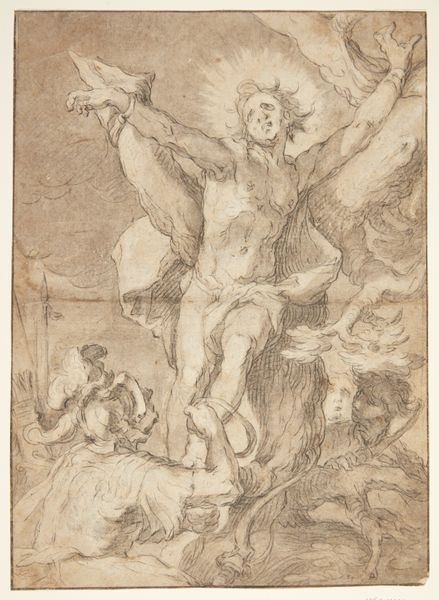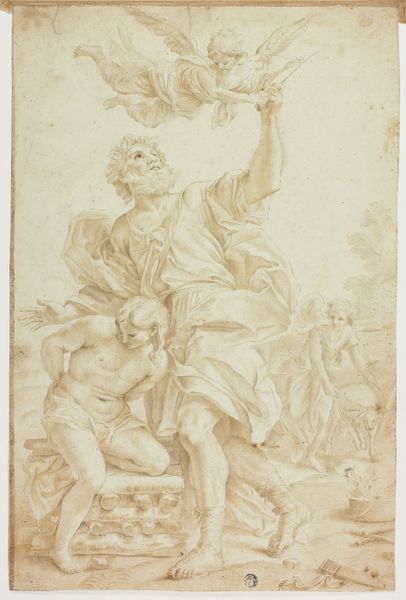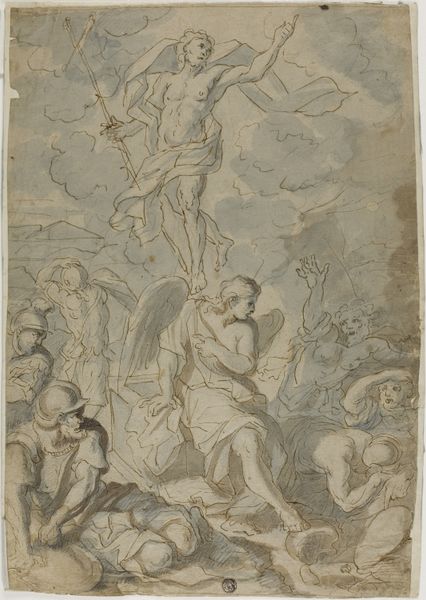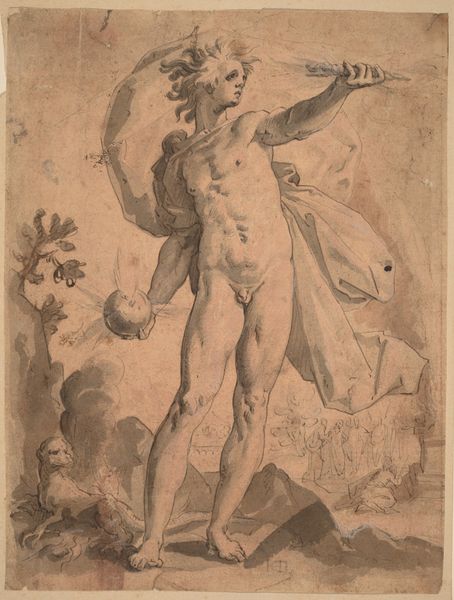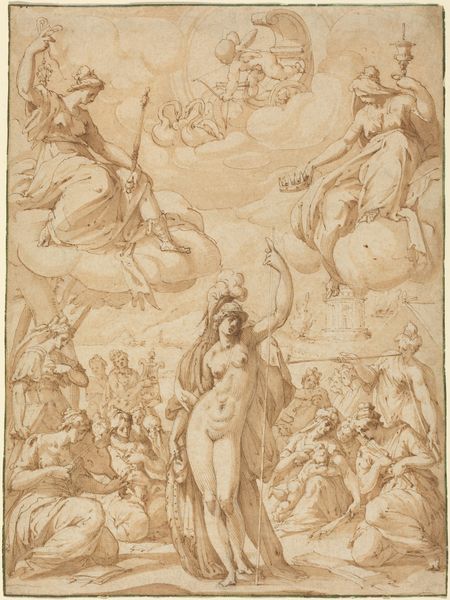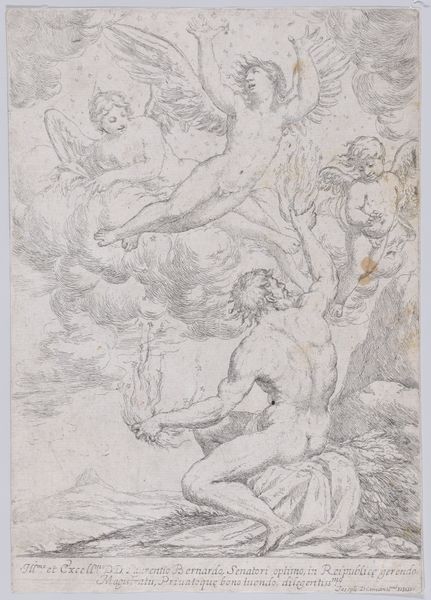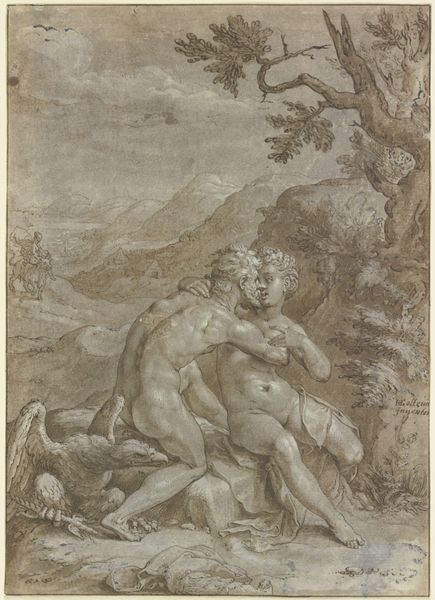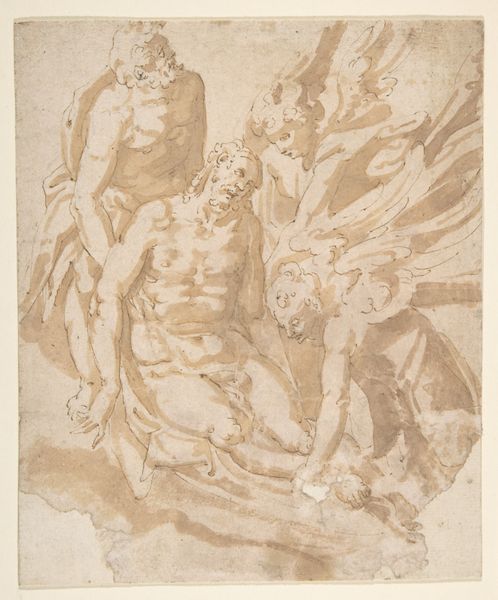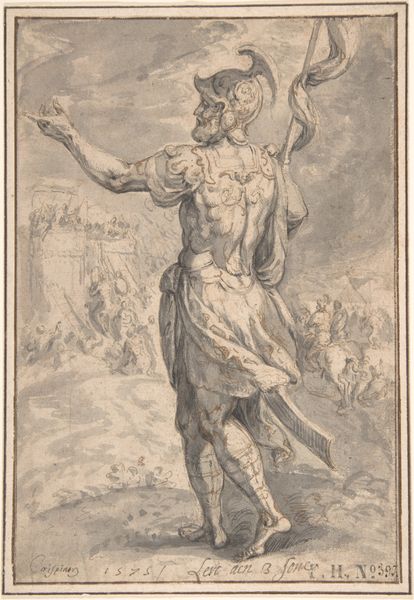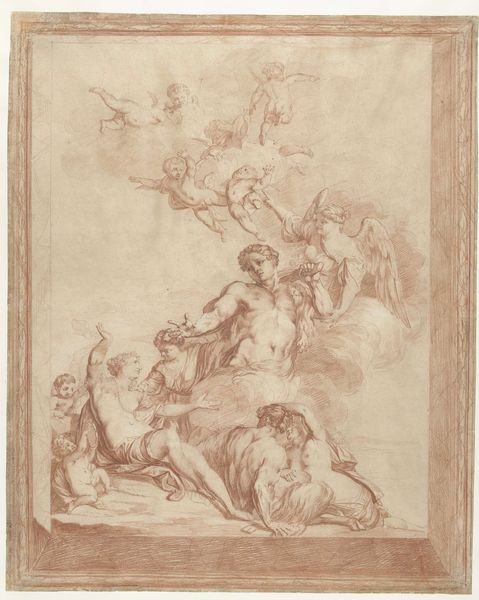
The Frailty of Human Happiness. A Man pursued by a Dragon clings to a Tree, licking Honey from his fingers 1610 - 1615
0:00
0:00
drawing, ink, pen
#
drawing
#
allegory
#
narrative-art
#
landscape
#
charcoal drawing
#
mannerism
#
figuration
#
ink
#
pen
#
northern-renaissance
Dimensions: 251 mm (height) x 168 mm (width) (bladmaal)
Curator: This drawing, attributed to Abraham Bloemaert from around 1610-1615, is called "The Frailty of Human Happiness. A Man pursued by a Dragon clings to a Tree, licking Honey from his fingers." It employs pen, ink, and charcoal to bring this allegorical scene to life. Editor: Immediately, I am struck by the visual tension. The composition itself feels precarious. The man, seemingly suspended between safety and peril, generates a rather unnerving sense of anxiety. Curator: Indeed. The artist's Mannerist style exaggerates the figure's form and posture, creating a sense of unease. Note the carefully constructed arrangement of figures within a landscape—each line contributes to the allegorical meaning. Semiotics are crucial to the artist's narrative expression. Editor: Absolutely. One must also consider the broader historical and social dimensions in Northern Renaissance and Mannerist art. The dragon becomes more than just a monster; it’s the representation of something. Perhaps, external forces, internal demons, the dangers inherent in pursuing momentary pleasure… Bloemaert seems to offer social commentary through symbolism. Curator: Agreed. The dragon functions symbolically. Considering structuralism here, we might also interpret the tree itself—and the act of clinging to it—as the structural foundations that support one in the face of those destructive, chaotic forces embodied by the dragons. The light reflecting on the man contrasts greatly with the shadowed masses below him. Editor: I would propose, though, that “Frailty” makes a far more potent statement about power and the human condition if read alongside contemporary critical theories on social vulnerability and privilege. This drawing becomes not just a symbolic composition, but an assertion on societal imbalances of its day. Bloemaert challenges viewers. Curator: A compelling reading, indeed. By meticulously arranging elements—light and shadow, the fragility of the figure against the monstrous threat—Bloemaert prompts introspection into humanity's place within the moral architecture. Editor: And when seen within a framework that acknowledges the artist’s social setting, this piece invites essential conversations about the challenges faced by our predecessors—ones not dissimilar to those we engage with today. It underscores the purpose art may have, to spark discourse that crosses ages.
Comments
No comments
Be the first to comment and join the conversation on the ultimate creative platform.

